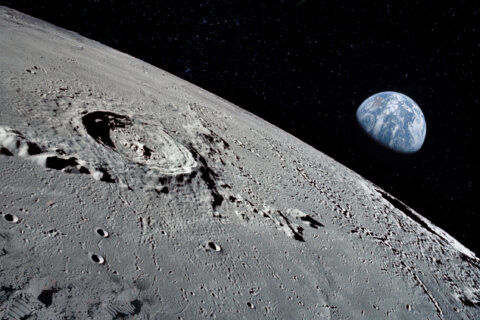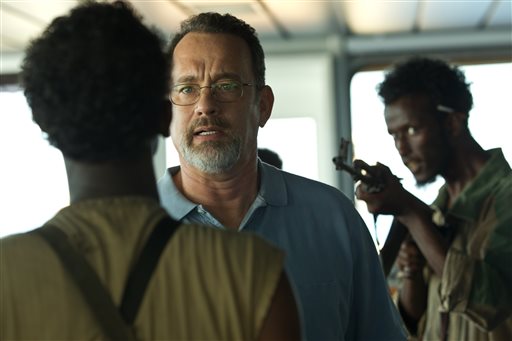
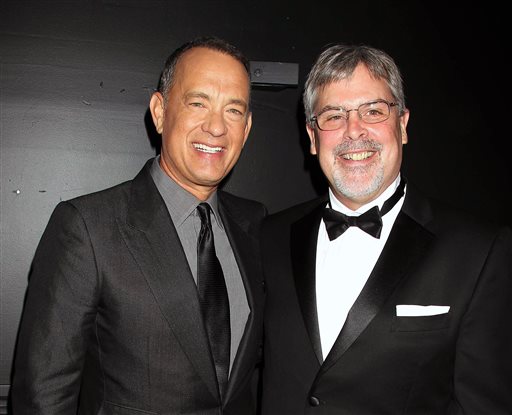
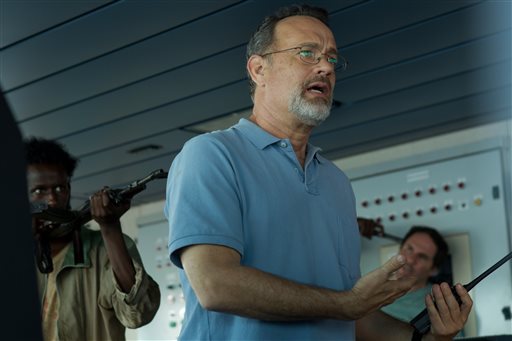
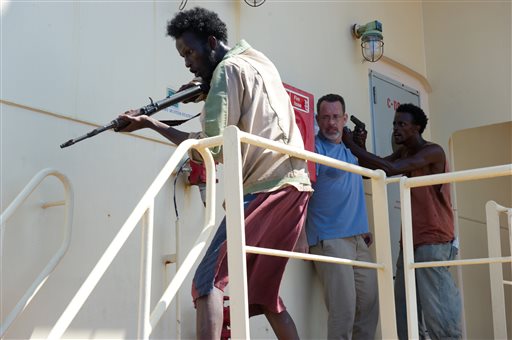
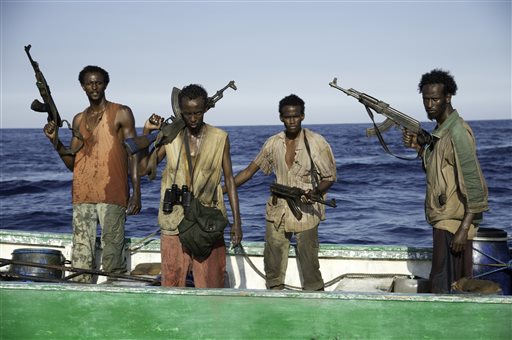
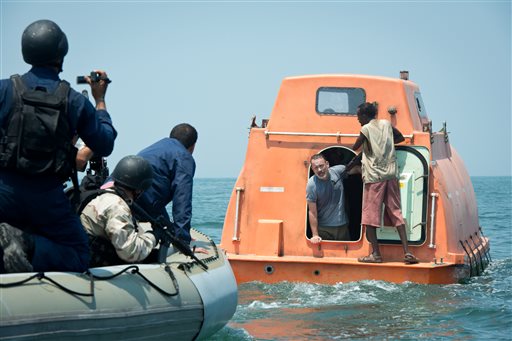
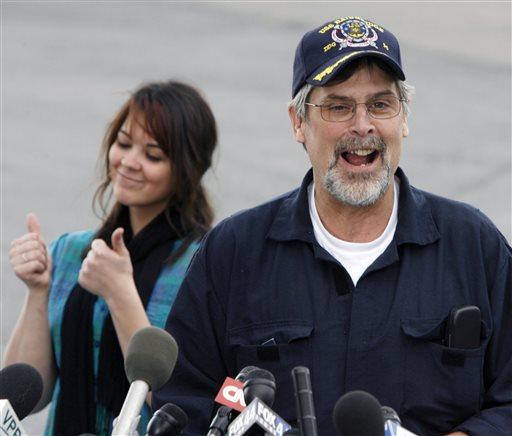
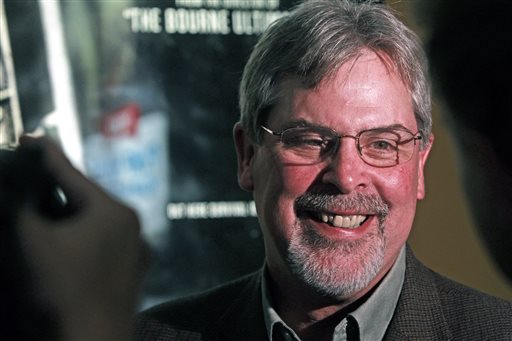

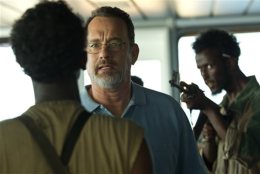
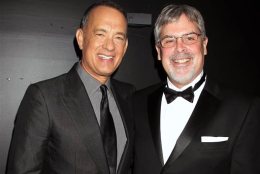
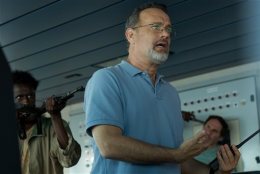


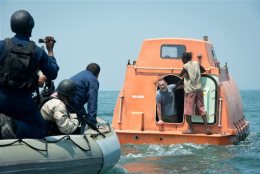

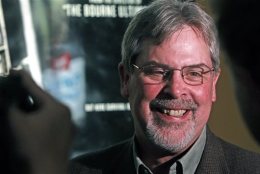
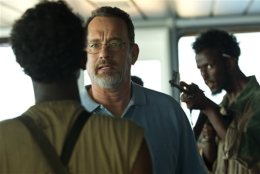
WASHINGTON – Certain current events beckon the big screen treatment. When SEAL Team Six took out Osama Bin Laden at that Pakistani compound in 2011, Kathryn Bigelow’s “Zero Dark Thirty” (2012) seemed like a foregone conclusion. Likewise, when a band of four Somali pirates hijacked a U.S. cargo ship in 2009 — the first time in 200 years — it screamed “Hollywood adaptation.”
And so, the cargo ship’s commander, Capt. Richard Phillips, joined author Stephan Talty to pen the book “A Captain’s Duty: Somali Pirates, Navy SEALS and Dangerous Days at Sea.” It was bought by the powerhouse producing team of Scott Rudin, Michael De Luca, Dana Brunetti and Kevin Spacey, who co-produced “The Social Network” (2010). Brunetti and Spacey also collaborated on Netflix’s “House of Cards” (2013).
The group then hired screenwriter Billy Ray, who’s made a career adapting novels like “Hart’s War'” (2002) and “The Hunger Games” (2012) and structuring biopics like “Shattered Glass” (2003) and the upcoming Scorsese project “Sinatra.”
Ray’s script cleverly turns “Captain Phillips” into “A Tale of Two Captains,” charting the collision course between Capt. Richard Phillips and Somali Capt. Muse. This forces the involvement of a third captain, Capt. Frank Castellano of the USS Bainbridge, to stage the Navy’s harrowing rescue mission.
“This was a week-long event,” Castellano tells WTOP National Security Correspondent J.J. Green.
“Attempting to put everything that occurred over the course of a week into a two-hour film is a monumental task, and I think they hit the highlights. I think they did a very accurate portrayal of what occurred, the pressures that everyone was under and the teamwork, honor, courage, commitment and professionalism of all involved.”
The film opens with its titular character (Tom Hanks) saying goodbye to his wife (Catherine Keener) as he heads to the airport for his next cargo haul aboard the Maersk Alabama, which proudly wears the tag of Norfolk, Va.
Phillips’ job is to get the cargo ship around the Horn of Africa, but to do so, his crew must sail through dangerous waters off the Somali coast. Sure enough, two ominous dots appear on the radar screen, signaling the arrival of two Somali pirate skiffs. Their crew is led by a scrawny but determined leader named Muse (Barkhad Abdi), who takes over the ship with the statement, “I am the captain now.”
Tom Hanks sports a pair of glasses and scruffy chin, while delivering one of his best performances in years. The two-time Oscar winner (“Philadelphia,” “Forrest Gump”) remains one of the most beloved actors working today, a sort of modern-day Jimmy Stewart with the same everyday charm. Lately, he’s been stuck in an Oscar drought with “Cloud Atlas” (2012) and the Dan Brown flicks “The Da Vinci Code” (2006) and “Angels and Demons” (2009), but “Captain Phillips” is a powerful return to form.
Hanks commands his crew with gravitas, breaks down into childlike tears when he thinks he’s going to die, and can barely speak in his convincing post-traumatic shock. Expect him to earn his first Oscar nomination since “Cast Away” (2000), which was the last time he was stuck at sea (“Wilson!”).
It would mark the same sort of Oscar comeback that Denzel Washington had last year with “Flight” (2012); two “Philadelphia” co-stars who cleaned up in the late ’80s and ’90s, but who have almost been taken for granted during their most recent decade of popcorn blockbusters. No more.
While Hanks’ performance is superb, I dare viewers to shake newcomer Barkhad Abdi as the Somali captain, Muse. Rather than a cliched villain with xenophobic overtones, Muse garners a level of sympathy rare for antagonists. This may be because he comes from a world of poverty where villagers line-up for a chance to go on a pirate mission, led by the same Somali warlords from Ridley Scott’s “Black Hawk Down” (2001). Or, maybe he comes across as a likable because he’s such a scrawny underdog compared to his more callous pirate colleagues. Whatever the reason, Abdi’s boney face becomes the personification of desperation fueled by globalization.
Ray’s script does not condone his actions, but spends ample time building his logical motivations.

From left, Faysal Ahmed, Barkhad Abdi, Barkhad Abdirahman, and Mahat Ali in "Captain Phillips." (AP Photo/Sony – Columbia Pictures, Jasin Boland)
He then complains that big western ships fish their waters, leaving them no fish left to catch themselves.
At one point, Capt. Philips says, “There has to be something else you can do besides piracy.”
To this Muse replies, “Maybe in America, Irish.”
Irish is, of course, the nickname he gives Phillips, perhaps a nod to director Paul Greengrass’ early film “Bloody Sunday” (2002) about the 1972 massacre of Irish civil rights marchers.
Greengrass visually expresses his theme of globalization in an extreme high-angle above a port of multi-colored cargo containers, where an untold variety of goods are transported across the globe, likely mixed with the illegal contraband of Season Two of “The Wire” (2002).
Greengrass mixes these majestic high-angles with the down-and-dirty handhelds that have become his signature. Not only does this create a cinema-verite style of gritty reality, it also accents the shaky scopes of Navy SEAL snipers trying to hit three moving targets through iPad-sized windows on a lifeboat rocking in the waves. Perched from the rear of the USS Bainbridge, they await the green light from Castellano to allow a trio of simultaneous long-range head shots.
Henry Jackman’s music builds and builds until the minute Castellano says, “Execute,” at which point the splatter of blood and the silence of the soundtrack tell us all we need to know. No fanfare, no confetti, no parades. They simply pack up their weapons and walk away; just another day on the job.
If you still doubt Greengrass as a director, simply compare Doug Liman’s “The Bourne Identity” (2002) to Greengrass’ two sequels, “The Bourne Supremacy” (2004) and “The Bourne Ultimatum” (2007). Greengrass took a solid spy thriller and elevated it into one of modern cinema’s most popular and finely crafted action franchises. In between, he outclassed Oliver Stone’s “World Trade Center” (2006) by making a truly tasteful portrait of extraordinary heroism by ordinary people in “United 93” (2006).
Just like “United 93,” Greengrass manages to build suspense from a true-life tale where we already know the ending. Occasional moments give “Captain Phillips” a more mainstream Hollywood feel than “A Hijacking” (2012), Tobias Lindholm’s festival favorite about a Danish cargo ship hijacked by Somali pirates. The weakest scene in this regard may be the forced opening, where Hanks speaks “on the nose” dialogue about how it’s getting tougher for his kids to compete in today’s world.
Still, “Captain Phillips” is top-notch filmmaking, the type of military thriller that would have made the late Tom Clancy proud. From start to finish, we’re consumed by the in-your-face images of cinematographer Barry Ackroyd, who shot “United 93” and earned an Oscar nomination for “The Hurt Locker” (2008), while our hearts are kept pounding by editor Christopher Rouse in his fifth collaboration with Greengrass after “United 93,” “Green Zone” and the two “Bourne” flicks.
“Captain Phillips” will certainly enter the Best Picture race, especially since the Academy has expanded to nine or 10 nominees in recent years. And while it may lack the visual imagination of “Gravity,” the narrative ambition of “The Butler” or the organic nature of “Fruitvale Station,” it remains one of the most inspired works out of Hollywood this year. Compared to its 2012 counterpart “Zero Dark Thirty,” the music won’t stick in your head quite as much, and the dialogue won’t offer any “tradecraft” entries into our movie vocabulary, but the central performance is every bit as captivating.
“This is a human story,” says Castellano.
“I think they captured the essence of what Capt. Richard Phillips went through throughout this situation, and I think they captured the level of effort it took to bring him home safely to his family.”
★ ★ ★ 1/2
The above rating is based on a 4-star scale. See where this film ranks in Jason’s 2013 Movie Guide. Follow WTOP Film Critic Jason Fraley on Twitter @AboveTheJFray, read his blog The Film Spectrum or listen Friday mornings on 103.5 FM.
WTOP National Security Correspondent J.J. Green contributed to this report.
Follow @WTOP and @WTOPliving on Twitter.




